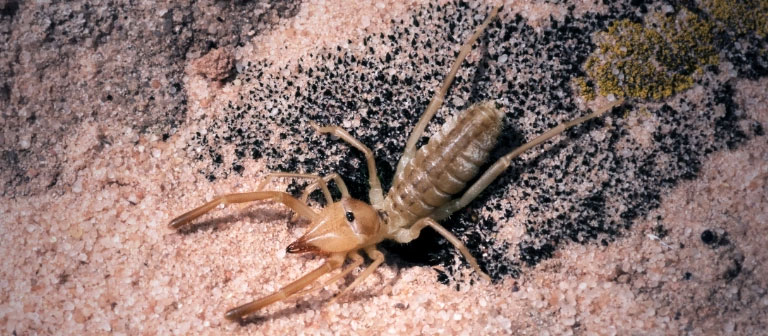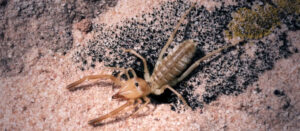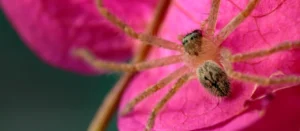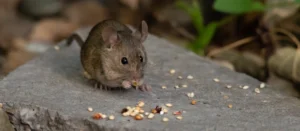Camel Spiders: Arizona’s Fast-Moving Desert Hunter

If you’ve spent time in the Arizona desert, chances are you’ve heard some wild stories about camel spiders. These fast, strange-looking creatures inspire a lot of myths. One of the most common questions is whether they’re venomous. The truth? Camel spiders aren’t nearly as dangerous as their reputation suggests. In this guide, we’ll show you how to identify them, separate fact from fiction, and share tips to keep them out of your home. If you need pest control for spiders, we can help you. We serve the entire Phoenix and Tucson areas from our offices in Gilbert, Phoenix, and Tucson, including Scottsdale, Mesa, Avondale, and Oro Valley. Contact us for a free estimate!
Sun Spiders, Camel Spiders, Wind Scorpions – What’s the Difference?
Surprise: they’re all the same animal. Depending on where you are or who you ask, people call them camel spiders, sun spiders, or wind scorpions. Despite the nicknames, they’re not spiders or scorpions. Instead, they belong to a group of arachnids called Solifugae, known for their speed, large jaws, and desert survival skills.
How to Identify a Camel Spider
- Color and Movement: Camel spiders are tan and blend into desert dirt and rocks. What makes them stand out is their speed. They dart in quick bursts that can make them seem aggressive, but it’s just their natural way of moving.
- Legs and Jaws: They have eight legs, though their long front pair act more like arms for balance and sensing. Their oversized jaws move side to side and are always active, which adds to their intense look.
- Behavior: Unlike web-building spiders, camel spiders are hunters. They don’t hide and wait. They chase down prey with speed and strength, relying on their jaws, not venom, to catch food.
Are Camel Spiders Venomous?
No. Camel spiders are neither venomous nor poisonous. They can bite with their powerful jaws if threatened, and it may hurt or break the skin, but there’s no venom involved. The main risk is infection if a bite isn’t cleaned properly.
What A Camel Spider Bite Looks Like
Bites are uncommon and usually happen when a spider is accidentally trapped in a shoe, sleeping bag, or backpack. The bite feels like a pinch or scratch, often leaving a small puncture or red irritation. Clean the wound, cover it, and watch for infection. If it gets worse after a day or two, see a doctor.
Where They Live in Arizona
Camel spiders thrive in hot, dry areas, which makes Arizona perfect for them. You’ll most often find them:
- Outdoors under rocks, logs, or debris during the day
- Hunting at night in sandy washes or near vegetation
- Occasionally inside garages, sheds, basements, or homes while chasing prey
They’re most common in southern and central Arizona but can appear in drier northern regions as well.
How Big Do They Get?
While stories claim they grow to the size of dinner plates, Arizona camel spiders typically reach 2–3 inches in body length, with larger ones up to 4 inches. Big enough to look intimidating, but far from the internet myths of foot-long monsters.
Are They Aggressive?
Not really. If one runs toward you, it’s usually trying to stay in your shadow to escape the sun, not to attack. They’re bold hunters when it comes to insects, but around people, they’re more interested in survival.
Do Camel Spiders Scream?
Despite the rumors, camel spiders don’t scream. They don’t have vocal cords. At most, they can make a faint buzzing or hissing sound by rubbing body parts together (a process called stridulation), but you’d have to be very close to hear it.
What Attracts Camel Spiders?
Food and shelter are the main draws. They go where insects are plentiful and shady, cool hiding spots are available.
Prevention Tips:
- Seal cracks around doors, windows, and foundations.
- Limit outdoor lighting at night (it attracts insects).
- Store firewood, rocks, and debris away from the house.
- Reduce clutter in sheds and garages.
- Keep grass and vegetation trimmed.
- Use pest control to reduce insect populations.
The Conclusion on Camel Spiders
Camel spiders may look scary, but once you know the facts, they’re far less mysterious. They’re not venomous, not aggressive, and not the desert monsters of legend. Give them space and they’ll usually move on.
If camel spiders, or other Arizona pests like termites, rodents, or scorpions, are giving you trouble, Blue Sky Pest Control can help with targeted solutions designed for your home. Our goal is simple: let you enjoy life without uninvited guests.


